Others
- Middelburg (ship), 18th century Dutch ship
Middelburg may refer to:
Limburg or Limbourg may refer to:
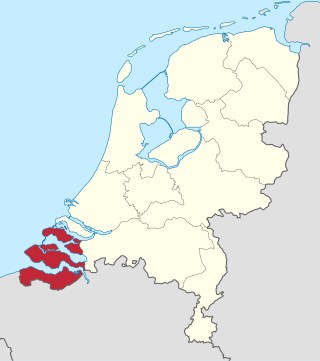
Zeeland is the westernmost and least populous province of the Netherlands. The province, located in the southwest of the country, borders North Brabant to the east, South Holland to the north, as well as the country of Belgium to the south and west. It consists of a number of islands and peninsulas and a strip bordering the Flemish provinces of East and West Flanders. Its capital is Middelburg with a population of 48,544 as of November 2019, although the largest municipality in Zeeland is Terneuzen. Zeeland has two seaports: Vlissingen and Terneuzen. Its area is 2,934 square kilometres (1,130 sq mi), of which 1,151 square kilometres (440 sq mi) is water; it has a population of 383,689.

The Scheldt is a 435-kilometre-long (270 mi) river that flows through northern France, western Belgium, and the southwestern part of the Netherlands, with its mouth at the North Sea. Its name is derived from an adjective corresponding to Old English sċeald ("shallow"), Modern English shoal, Low German schol, West Frisian skol, and obsolete Swedish skäll ("thin").

Walcheren is a region and former island in the Dutch province of Zeeland at the mouth of the Scheldt estuary. It lies between the Eastern Scheldt in the north and the Western Scheldt in the south and is roughly the shape of a rhombus. The two sides facing the North Sea consist of dunes and the rest of its coastline is made up of dykes. Middelburg, the provincial capital, lies at Walcheren's centre. Vlissingen, 9 kilometres (5.6 mi) to the south, is the main harbour and the third municipality is Veere.

Middelburg is a city and municipality in the south-western Netherlands serving as the capital of the province of Zeeland. Situated on the central peninsula of the Zeeland province, Midden-Zeeland, it has a population of about 48,000.

Hulst is a municipality and city in southwestern Netherlands in the east of Zeelandic Flanders.

Arnemuiden is a city of around 5000 people in the municipality of Middelburg in the province of Zeeland in the Netherlands. It is located on the former island of Walcheren, about 3 km east of the city of Middelburg.
Jacob Roggeveen was a Dutch explorer who was sent to find Terra Australis and Davis Land, but instead found Easter Island. Jacob Roggeveen also found Bora Bora and Maupiti of the Society Islands, as well as Samoa. He planned the expedition along with his brother Jan Roggeveen, who stayed in the Netherlands.
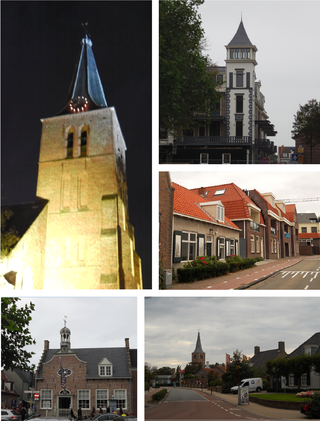
Domburg is a seaside resort on the North Sea, on the northwest coast of Walcheren in the Dutch province of Zeeland. It is a part of the municipality of Veere, and lies about 11 km northwest of the city of Middelburg, the provincial capital.
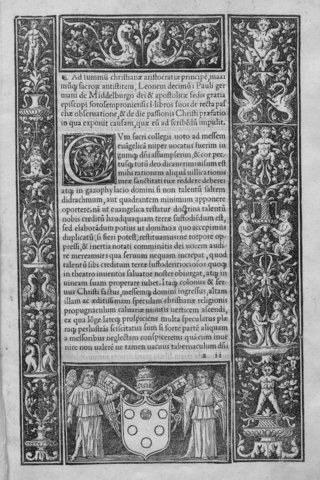
Paul of Middelburg was a scientist from Zeeland and bishop of Fossombrone.

The Battle of the Scheldt also known as the Battle of Walcheren was a naval battle that took place on 29 January 1574 during the Eighty Years' War and the Anglo–Spanish War. The battle was fought between a Dutch rebel Sea Beggar fleet under Lodewijk van Boisot and a Spanish fleet under Julián Romero. The Spanish fleet was attempting to relieve the Spanish held town of Middelburg which was under siege but the fleet under Boisot intercepted them and were victorious with the destruction or capture of nearly fifteen ships. Middelburg as a result then surrendered only nine days later along with Arnemuiden.

The County of Zeeland was a county of the Holy Roman Empire in the Low Countries. It covered an area in the Scheldt and Meuse delta roughly corresponding to the modern Dutch province of Zeeland. The County of Zeeland did not include the region of Zeelandic Flanders which was part of Flanders; conversely, the modern Province of Zeeland does not include Sommelsdijk, historically part of the County of Zeeland.
De Hoop is a name used for mills in Belgium and the Netherlands.

In August 1572, during the course of the Eighty Years' War, the city of Goes, in the Spanish Netherlands, was besieged by Dutch forces with the support of English troops sent by Queen Elizabeth I. This was a menace to the safety of the nearby city of Middelburg, also under siege. Given the impossibility of rescue of Goes by sea, 3,000 soldiers of the Spanish Tercios under the command of Cristóbal de Mondragón waded across the river Scheldt at its mouth, walking 15 miles overnight in water up to chest deep. The surprise arrival of the Tercios forced the withdrawal of the Anglo-Dutch troops from Goes, allowing the Spanish to maintain control of Middelburg, capital of Walcheren Island.
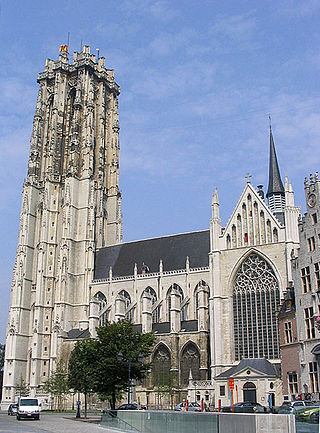
Brabantine Gothic, occasionally called Brabantian Gothic, is a significant variant of Gothic architecture that is typical for the Low Countries. It surfaced in the first half of the 14th century at St. Rumbold's Cathedral in the city of Mechelen.

The siege of Middelburg (1572–1574) lasted over a year during the Eighty Years' War. A Dutch rebel army with the support of the English laid siege to Middelburg, which was being held by Spanish forces under Cristóbal de Mondragón, on 4 November 1572. The Spanish held out and only capitulated on 18 February 1574, when news arrived that a relief effort to save Middelburg was defeated at Rimmerswiel.
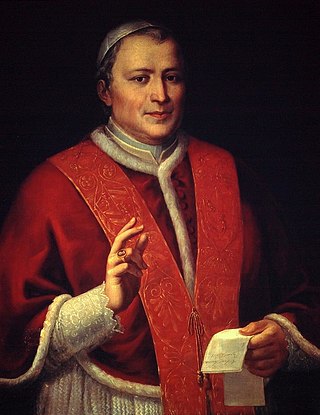
On 4 March 1853, Pope Pius IX restored the episcopal hierarchy in the Netherlands with the papal bull Ex qua die arcano, after the Dutch Constitutional Reform of 1848 had made this possible. The re-establishment of the episcopal hierarchy led to the April movement protest in 1853.

Middelburg Abbey is a former Premonstratensian abbey in Middelburg, the Netherlands. At one time it was the centre of a large monastic complex.
The Roman Catholic Diocese of Middelburg was a short-lived (1559-1603) Latin Catholic suffragan diocese in the ecclesiastical province of the Archbishop of Utrecht, with episcopal see at Middelburg, on Walcheren (former) island in the Dutch Zeeland province.
Balthazar de Moucheron was a Dutch trader, ship owner and one of the founders of the Dutch East India Company, but never participated as he went bankrupt in the same year. He is known for his early trading with India (Calcutta) and Indonesia, America, the west coast of Africa, the Baltic Sea and the White Sea (Archangelsk).